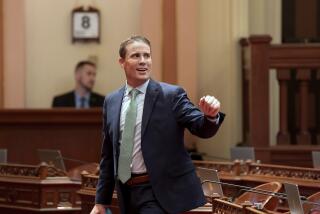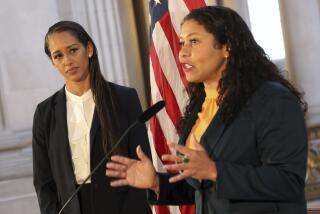The prescription drug toll
If one doctor’s prescriptions might be connected to the unnecessary deaths of multiple patients over several years, the state should be asking questions. Times reporters Scott Glover and Lisa Girion analyzed 3,733 prescription drug-related deaths in four Southern California counties, revealing that just 71 doctors — one-tenth of 1% in those counties — had written prescriptions in 17% of such fatalities over six years. One doctor profiled in the stories published Sunday had prescribed medications for 16 patients who subsequently overdosed, according to coroner’s reports.
Not that the state has been apathetic about prescription drug abuse. One of the 71 doctors awaits trial on charges of second-degree murder in connection with the overdose deaths of three patients, The Times reported; four others already have been convicted of drug offenses related to prescriptions. But most of the doctors whose patients have gone on to overdose have spotless records with the Medical Board of California.
Perhaps they deserve those records. The doctors singled out by The Times’ investigation tend to specialize in pain treatment, and it makes sense that their patients would be somewhat more likely to overdose on painkillers and related medications. If there is any fault, perhaps it lies with the patients for misusing the drugs.
TIMES INVESTIGATION: Legal drugs, deadly outcomes
But that can be determined only by medical experts with access to confidential files. Legislation proposed by state Sen. Curren D. Price Jr. (D-Los Angeles) would help by requiring coroners to report all prescription drug deaths to the medical board. Those reports should include the prescriptions and the names of the doctors who wrote them, which would give the board an aggregated, usable database to discern whether some doctors’ prescriptions are connected to multiple fatalities.
Prescription drug abuse is a menace. In 2010, federal researchers reported that emergency room visits resulting from the non-medical use of opioid prescription drugs — often used in pain relief — more than doubled from 2004 through 2008. There were as many visits for those prescription medications as for illegal drugs.
We don’t want a return to the days when access to such medications was limited almost solely to terminally ill patients; severe, chronic pain isn’t something that patients should have to endure without drugs. Nor should pain treatment specialists be harassed for writing more of these prescriptions than other doctors do. That would make it harder for patients to get medications they honestly need.
VIDEO: Pain doctors talk about their patients
But the increased use of the drugs calls for increased scrutiny of prescription medication overdoses. Putting the right information into the medical board’s hands would be a good start.
More to Read
A cure for the common opinion
Get thought-provoking perspectives with our weekly newsletter.
You may occasionally receive promotional content from the Los Angeles Times.






